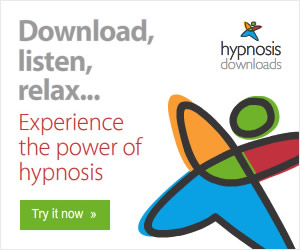As currently practiced, hypnotherapy most often involves teaching a child how to self-hypnotize in order to control bad habits, physical symptoms and other conditions. The child learns to use relaxation techniques and mental images — similar to a daydream or fantasy — to enter an “altered mental state” (in other words, to induce hypnosis).
Once in this altered state, the therapist makes suggestions aimed at producing the desired change in behavior, anxiety level, or symptom intensity. These may range from recalling times of feeling happy and well in a child with chronic pain, to thinking of the body as a “computer” that the child can “program” with his or her mind.
The child may also receive specific teaching about their problem as a means of helping them learn to exercise control over their body. For example, a child with nocturnal enuresis (bedwetting) may be taught the basic anatomy and function of the bladder. Ultimately, the child is able to induce self-hypnosis when needed to achieve the desired changes.
What is the history of using hypnosis with children?
Hypnosis of children was first described in 1779 by Mesmer, who reportedly used hypnotherapy to treat a child with visual problems. Historically, hypnotherapy was rarely practiced with children because people thought that children could not be hypnotized. In the 1970's, however, observations suggested that children were easier to hypnotize than adults, and that hypnosis could be used in the treatment of behavioral and physical problems in children.
What are some uses of hypnotherapy in children?
Hypnotherapy has been used to treat hundreds of behavior disorders, chronic diseases, pain control and easing discomfort. Here is a partial list:
Behaviour problems:
- Habits, tic disorders, thumb sucking, trichotillomania (hair-pulling), Tourette's Syndrome.
- Nocturnal enuresis (bedwetting)
- Sleep terrors, nightmares and other sleep disturbances
- Swallowing problems, food aversions and choking (not related to anatomic problems or disease)
- Anxiety and stress
Chronic Conditions
Asthma
Case reports suggest that hypnotherapy may reduce episodes of wheezing or shortness of breath, and may decrease reliance on asthma medications.
Cystic Fibrosis (CF)
A study in adults and children with CF suggests that hypnotherapy can reduce symptoms of cough, shortness of breath, anxiety, and other problems commonly faced by these patients.
Migraine headaches
Cancer
See this summary of medical literature on the uses of hypnotherapy for children with cancer.
Control of pain, treatment and medical procedure discomfort and other symptoms:
Chronic pain in cancer patients
Initial results from small studies showing that hypnotherapy can be used to manage chronic pain in children with cancer; larger studies are likely underway.
Nausea and vomiting in chemotherapy
Several studies comparing hypnotherapy to anti-nausea medications and simple relaxation techniques show that hypnotherapy plus medications was more effective than medications alone in reducing nausea and vomiting. Children treated with hypnotherapy had less pre- and post-chemotherapy nausea and vomiting.
Treatments: pill-swallowing, injections, and medical procedures
Hypnosis has been shown to be very effective in helping children through painful procedures like shots, IV pokes, even spinal taps and bone marrow studies.
Source: http://www.med.umich.edu/1libr/yourchild/hypnosis.htm Carolyn Lorenz, M.D., Neda Yousif, M.D. and Kyla Boyse, R.N. Reviewed by faculty and staff at the University of Michigan. Updated January 2007.
Antonia Stuart-James is an English Hypnotherapist in Belgium helping people make positive change.
Monday, 30 July 2007
Hypnosis with Children
Labels:
asthma,
bedwetting,
cancer,
children,
cystic fibrosis,
hair pulling,
Mesmer,
migraine,
pain,
sleep disorders,
swallowing,
thumbsucking,
tics,
Tourette's Syndrome
Subscribe to:
Post Comments (Atom)












2 comments:
I totally agree that people should have follow-up but this is not always available. The two cases I personally treated with hypnosis had tried all the usual methods without success. Only hypnosis worked. I would also add that I posted an article written by the University of Michigan.
Post a Comment